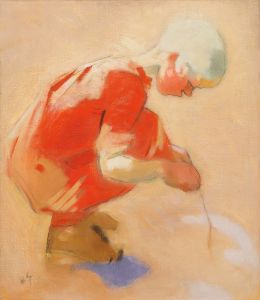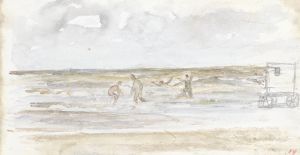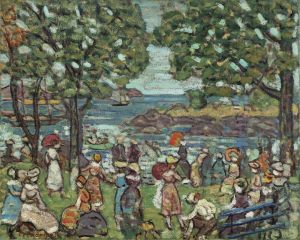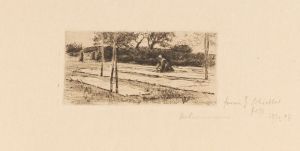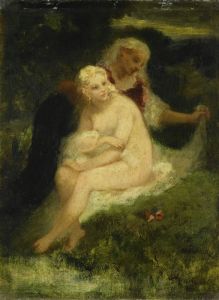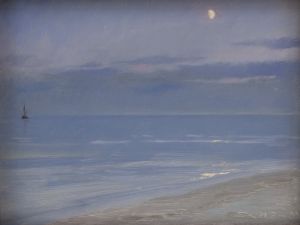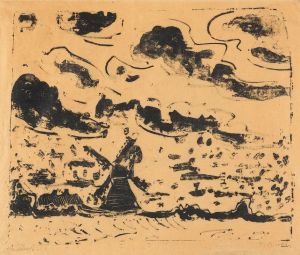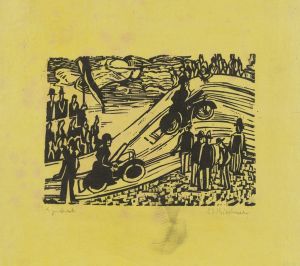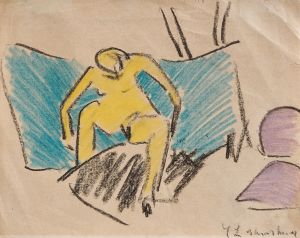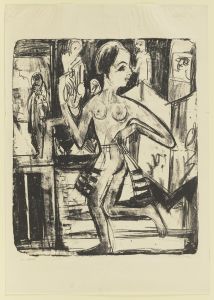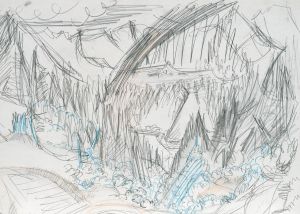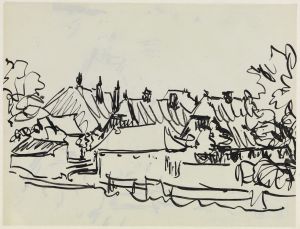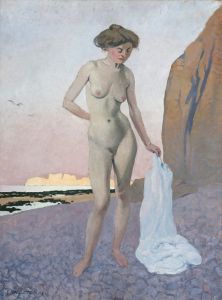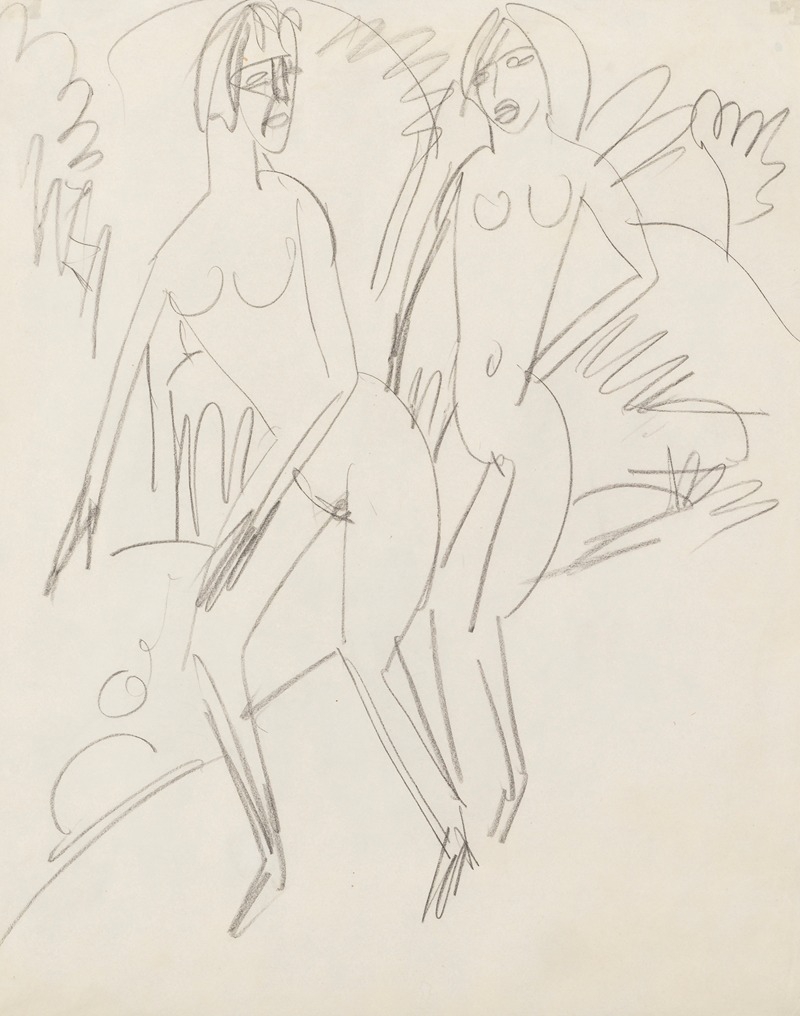
Zwei Badende an der Fehmarnküste
A hand-painted replica of Ernst Ludwig Kirchner’s masterpiece Zwei Badende an der Fehmarnküste, meticulously crafted by professional artists to capture the true essence of the original. Each piece is created with museum-quality canvas and rare mineral pigments, carefully painted by experienced artists with delicate brushstrokes and rich, layered colors to perfectly recreate the texture of the original artwork. Unlike machine-printed reproductions, this hand-painted version brings the painting to life, infused with the artist’s emotions and skill in every stroke. Whether for personal collection or home decoration, it instantly elevates the artistic atmosphere of any space.
"Zwei Badende an der Fehmarnküste" (Two Bathers on the Coast of Fehmarn) is a painting by the German expressionist artist Ernst Ludwig Kirchner. Created in 1913, this work is a notable example of Kirchner's vibrant and dynamic style, which is characterized by bold colors and expressive forms. Kirchner was a leading figure in the German Expressionist movement and a founding member of the artist group Die Brücke (The Bridge), which sought to create a new form of artistic expression that bridged traditional and modern approaches.
The painting depicts two nude figures on the coast of Fehmarn, an island in the Baltic Sea that Kirchner visited frequently. Fehmarn was a place of inspiration for Kirchner, providing a natural setting that contrasted with the urban environment of Berlin, where he spent much of his time. The island's landscape and the freedom it offered were reflected in many of his works from this period.
In "Zwei Badende an der Fehmarnküste," Kirchner captures the essence of the natural world and the human form in a way that emphasizes movement and emotion. The figures are rendered with elongated forms and simplified shapes, a hallmark of Kirchner's style. The use of vivid colors and dynamic brushstrokes conveys a sense of energy and vitality, suggesting the joy and liberation associated with being in nature.
Kirchner's work during this period often explored themes of modernity, nature, and the human experience. His time on Fehmarn allowed him to experiment with these themes in a setting that was removed from the industrialized world. The painting reflects Kirchner's interest in the relationship between humans and their environment, a common theme in his oeuvre.
The painting is also significant for its representation of the human body. Kirchner's portrayal of the nude figures is both expressive and abstract, moving away from the realistic depictions that dominated earlier art movements. This approach was part of a broader trend in early 20th-century art, where artists sought to break away from traditional techniques and explore new ways of seeing and representing the world.
"Zwei Badende an der Fehmarnküste" is housed in the Brücke Museum in Berlin, which holds a significant collection of works by Kirchner and other members of Die Brücke. The museum is dedicated to preserving and showcasing the art of this influential group, which played a crucial role in the development of modern art in Germany.
Kirchner's work has been the subject of extensive study and appreciation, and his contributions to the Expressionist movement are widely recognized. His paintings, including "Zwei Badende an der Fehmarnküste," continue to be celebrated for their innovative use of color, form, and composition, as well as their ability to convey deep emotional and psychological insights.
Overall, "Zwei Badende an der Fehmarnküste" exemplifies Kirchner's artistic vision and his ability to capture the dynamic interplay between humans and nature. It remains an important work within the context of early 20th-century art and continues to inspire and engage audiences with its bold expression and timeless themes.





